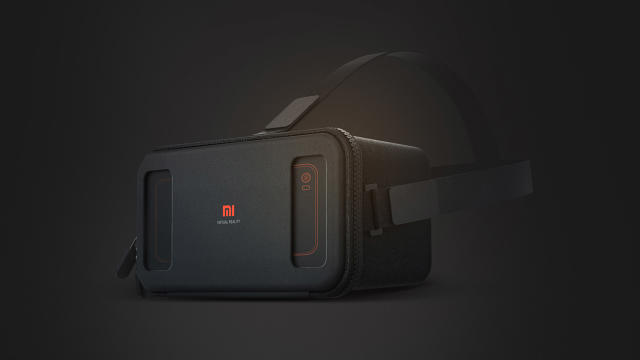VR Market In China Is “Crazy, Like Really Crazy”
If you think you’ve been hearing a lot about virtual reality these days, it’s nothing compared to what’s going on in China.
Here in the U.S., VR is very much in the news as hardware like the Oculus Rift, HTC Vive, Samsung’s Gear VR, and others have become mainstream products. But to people who know what’s going on in China, the VR ecosystem there has probably already surpassed that of the U.S. and Europe. And that’s to say nothing of the potential for further explosive growth that’s expected to come soon.
“VR is huge in China,” said Minal Hasan, the general partner and managing partner of K2 Global, a Silicon Valley venture capital firm that is making substantial investments in Asia. “I think China will adopt VR way faster than the U.S. because of how the country is structured, and how involved the government is.”
Many recent data points back up that prediction. Earlier this month, California’s NextVR, a leading producer and distributor of live-streamed pro sports and music events in VR, announced tens of millions of dollars in new funding from Chinese investors. Jaunt VR, a maker of a high-end VR camera and the developer of an end-to-end VR production and distribution system, set up a joint venture this spring aiming to bring cinematic virtual reality to China. Also this month, Bloomberg wrote that Chinese investors are hot on numerous types of VR apps.
Today brings the latest evidence of China’s appeal to VR companies there and abroad: Nokia’s announcement that it is going to begin selling its $45,000 professional-quality Ozo camera in the Asian country.

“It’s big news for us,” Guido Voltolina, Nokia’s head of presence capture told Fast Company. “I think it’s really the sign of the maturity of the product that started in North America, but had the ambition to scale to be a global product.”
In the months since the Ozo’s launch in North America and Europe, Nokia has lowered the camera’s cost from $60,000 to $45,000 and all buyers, including those in China, will get the latest version of Ozo Creator, which offers content creators the choice of either fast or high-quality stitching technology.
To Voltolina, bringing the Ozo to China is reflective of the Chinese VR market being “crazy, like really crazy, in a positive way.”
Added Voltolina, “It’s growing at a speed I’ve not experienced, either in North America or Europe, to the point that will make [VR in] China surpass the other, more traditional markets, like North America or Europe.”
Hasan said she “completely agrees,” noting that she’s seen estimates that there will be $860 million in VR investment in China this year alone, and as much as $8 billion to $10 billion by 2020.
Both Hasan and Voltolina pointed to a strong appetite in China for entertainment, especially for trying out new experiences and technologies. That means there is an ample and growing market for places like Internet cafes, arcades, and other public places that offer the opportunity to play with VR.
For example, Hasan noted that there are “tons and tons of arcades, cafes, and amusement parks dedicated to VR in China, as well as stores in malls where people can play around with virtual reality products. She also said HTC, maker of the Vive, is opening up 10,000 outlets in China where people can come and try out the high-end VR gear—and, HTC hopes, buy it.
At the same time, Chinese manufacturers are flooding the market with well over 100 different VR headsets, Hasan said, from low-end, Google Cardboard-quality systems to higher quality head-mounted displays. These are coming from small outfits and giant companies alike. Xiaomi, for example, just announced its first VR headset, the Mi VR Play—which it’s selling for next to nothing.

“Looking at the overall investment in VR, not just in VR cameras, in VR infrastructure,” said Voltolina, “all the major [Chinese] companies … are not just testing the environment, they’re really betting on it. They’re making multimillion-dollar investments to be part of it, and accelerate the infrastructure for deployment.”
Hardware Saturation
The problem, in China as in the U.S., is that while there is no shortage these days of VR hardware, there is very much a shortage of content. That’s why, Hasan said, big Chinese companies like Baidu, Alibaba, Tencent, and others are putting money into early-stage VR companies developing content.
That content will be aimed both at individual consumers who own VR headsets and at the public VR stores and cafes where consumers can pay to play.
“I think that’s the direction things are going in,” Hasan said. “Hardware’s becoming saturated.”
And that’s very much the rationale for companies like Jaunt and Nokia bringing their professional-quality cameras to China—to give creators the tools they need to produce all that content.
“Everything that is related to both computer-generated content, or shoot-and-capture VR content, is growing tremendously,” Voltolina said. “And all the production companies are adapting different solutions. That’s why we want to be there with the Ozo, because it is really scaling rapidly.”

Beyond Entertainment
In the meantime, there appear to be several areas beyond entertainment of potential growth for virtual reality in China.
Among them, according to Bloomberg, are VR tours of real estate, presumably along the lines of what is currently offered in the U.S. by Matterport; and “planned enhanced product functions from e-commerce providers such as Alibaba.”
Hasan also pointed to education as a major growth area for VR in China. She said she thinks the Chinese government may begin requiring schools to use VR headsets as a teaching tool. “If the government gets behind it,” she said, “it’ll be in every school in the country. The rate of adoption is just going to be insane.”
She also said she thinks if anyone can figure out how to integrate VR with WeChat, which has 800 million active users in China, that will be yet another major growth opportunity for the technology.
For his part, Nokia’s Voltolina thinks people should expect to see VR content being created in China not just for that market, but for the rest of the world. He said Nokia, for example, had tested the Ozo on a project about the life of pandas, one of China’s most recognizable symbols.
“That’s the kind of content, of course, that if you can afford to visit China, you want to go and see in person,” Voltolina said. But for everyone else, VR is “how you go to China without flying there.”
Fast Company , Read Full Story
(34)














